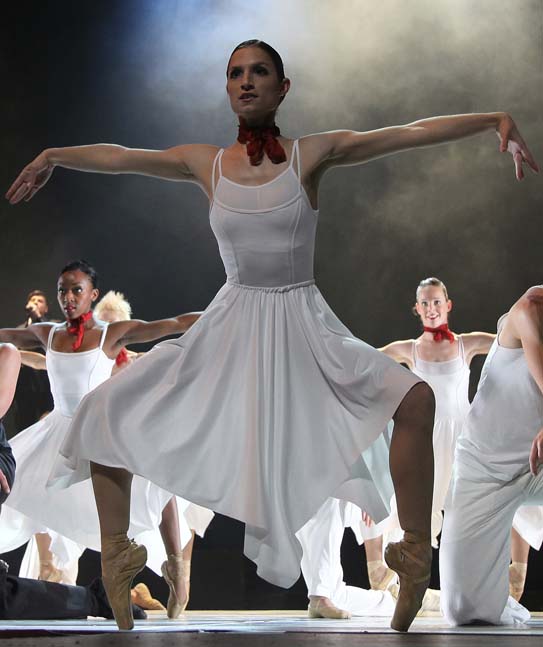Choreographer Sean Bovim founded the Bovim Ballet in 2009, with the stated intent of "making ballet entertaining and accessible through the choice of choreography, music and fashion".

That idea that classical art forms need to be updated to maintain relevance – is that a “need” or a “want”; an artistic decision or a financial one?
“There’s definitely a place for the classics and for tradition,” says Bovim, “but as architecture and style and everything else moves on, I think ballet needs to keep up.
“Many other art forms have become edgier, which changes the way that young people define ‘entertainment’. Our show Queen At The Ballet, for instance, is only ten years old, but we keep upda-ting it. We’ve just added a hip hop dancer.”
What facets need to be retained to ensure that the art form’s classical roots are still evident?
“When I used to go and watch ballet, I was always amazed how easy the dancers made it look when I knew what they were doing was incredibly difficult,” says Bovim.
“It’s the same with a rock ballet. The musicality of the piece must flow through the dancers without a hitch. There’s no time to stop and think.”
Creating an original work makes it easier to incorporate fresh ideas, but marketing such a production starts from scratch, as there is no history to fall back on (classical ballets have received centuries of word-of-mouth feedback). How does that impact on decisions about the subject matter for new pieces?
“If I take on a classic, there must be a new musical part to it that moves me,” says Bovim.
“There’s a great opportunity, I think, to remake Swan Lake with more African relevance. But there doesn’t have to be a mega-brand involved.”
That said, involving artists from other disciplines – rock singer Cito and stage musical star Angela Killian both appear in the upcoming Johannesburg run of Queen At The Ballet – must help to spread the publicity net wider? Or is this also about creating an authentic new art form?
“We haven’t always had singers in the shows,” says Bovim, “but this is about layering the art and giving it depth.
“Sometimes the genre comes out somewhere between a ballet and a musical. I would like to see rock ballets challenge musicals and traditional ballet: if you’ve seen all the classics in those genres before, rock ballet gives you another option.”
Queen At The Ballet has been a huge success, and other Bovim productions, including SwingTime and Private Presley have also done well. With Bovim’s niche still being relatively undeveloped, how much pressure is there to stay on a roll?
Will one failure destroy the momentum gained so far?
“Financially, you take a big risk at the beginning of any new project,” says Bovim.
“You must think long and hard about how the show’s performance will affect you. Queen At The Ballet has become a show people want to see again and again – the Joburg premiere will be our 100th performance of the production.”
Bovim Ballet has also toured Queen and other shows internationally. How much of a role does that aspect of the business play in making a living out of choreography or dancing?
Bovim grins.
“You start as a choreographer, then become a company director and producer and start putting your own money into everything. It’s important to put the product in people’s minds. As you find new theatres to dance in, your following gets bigger, which means more bums on seats, which means more money, which means more planning can be done.
“I dream as far as the Rand can take me. I like to make sure everything is paid up; that we keep everything as clean as possible financially.”
To the uninitiated, choreography seems like one of those subjects where there are no wrong answers, making it difficult for professionals to prove their worth to neutral audiences.
“It’s like a blind date,” smiles Bovim.
“You put yourself out there and hope they like it. And thinking commercially means trying to guess what audiences want to see.”











